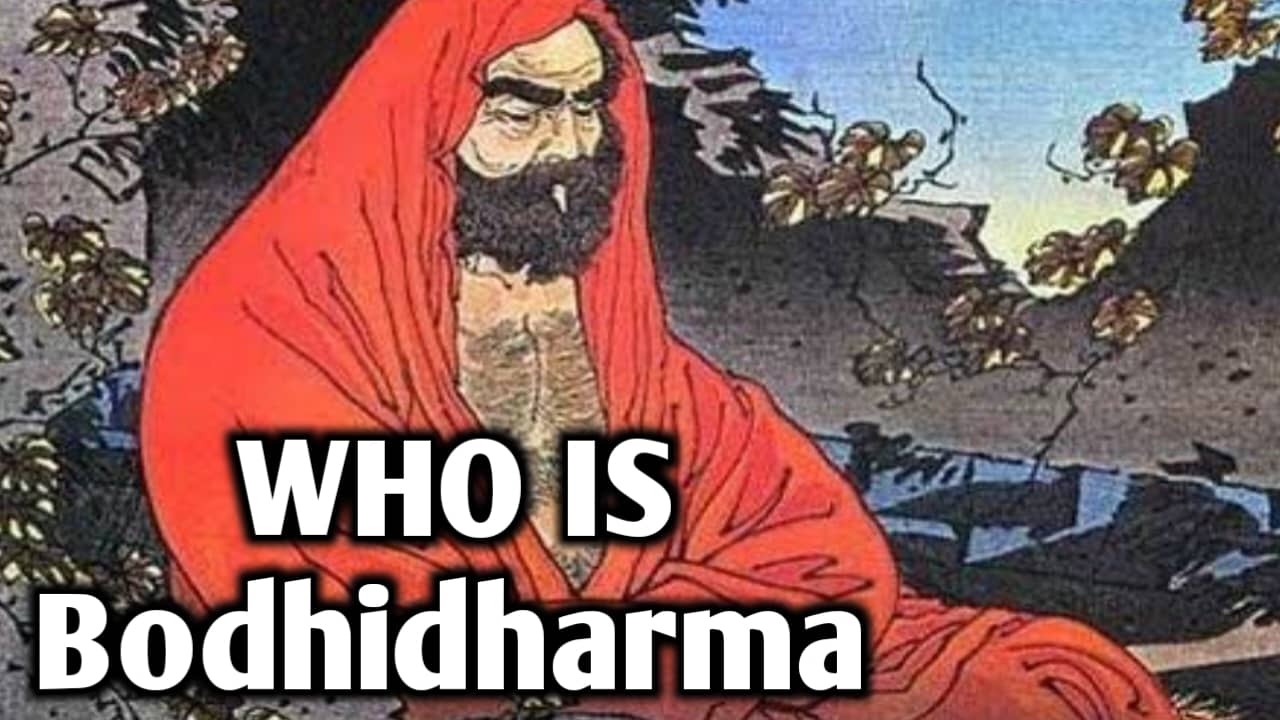Know Who is Bodhidharma, his whole history of life, his death and Teachings and also what was his philosophy and much more Full Biography at who is identity.
History of Bodhidharma

Bodhidharma real photos/face are not available as he existed before the invention of cameras.
A semi-legendary Buddhist Monk living during the 5th and 6th centuries, Bodhidharma was. Historically, he is recognised as a Chan Buddhism transmitter to China and considered to be his first Chinese patriarch. The physical training of Shaolin monks leading to the creation of Shaolin kungfu also began according to chinese legend. According to Chinese legend. He’s called Daruma in Japan. His name means “Bodhi” in Sanskrit. “Dharma of awakening.”
There is little contemporary biographical evidence about Bodhidharma and thereafter legendary and unreliable information has been drawn up.
Bodhidharma, which is a central Asia, but also the Indian sub-continent, came from the western regions and is described either as ‘Persian Central Asian’ or ‘South Indians the third son of a great Indian King.’ Bodhidharma is represented as a non-Chinese untempered, bold, wide-eyed, abundantly barbed person throughout the Buddhist art. The Blue-Eyed Barbaric is referred to in Chan’s texts as “the blue-eyed barbaric.”
In addition to the accounts of China, Bodhidharma also contains a number of popular traditions.
The stories differ as soon as he reached the Liu Song Dynasty (420–479), and later stories from his arrivage in the Liang Dynasty (502–557). The accounts are also different. In the territory of Northern Wei (386–534), Bodhidharma was mainly active. It dates back to the early 5th century Modern scholarship.
Bodhidharma’s Death
Having been interred by his follower Dazu Huike, perhaps in a grotto, Bodhidharma died on the banks of the Luo River. The death place is at the Luo River where Bodhidharma died peacefully. Bodhidharma’s death must have occurred prior to 534, the North Wei fall, according to Daoxuan’s chronology, because Dazu Huike subsequently leaves Luoyang to Ye.
Bodhidharma Teachings & Practices
The meditation and La Fabrakāvatāra Sūtra are the main teaching and practise of Bodhidharma. In an unbroken line that extends back to the Gautama Buddha itself, the Anthologie of the Patriarchal Hall (952) identifies Bodhidharma as the 28th Patriarch of Buddhism. Bodhidharma, frequently referred as “The Wall-Gazing Brahmin,” was a Buddhist monk who lived in India.
Directing One’s Attention to One’s Own Mind
A four-line stanza attributed to Bodhidharma has the first two verses echoing the Lakvatra Stra’s hatred for language and the second two verses emphasising the significance of insight into reality gained via “self-realization.”
Gazing at The Wall
Tanlin mentions “wall-gazing” (bgun) as a Bodhidharma practise in the prologue to Two Entrances and Four Acts, and Daoxuan mentions it in the Further Biographies of Eminent Monks. Tanlin and Daoxuan both equate “wall-gazing” (Chinese: ; pinyin: nxn) with “quieting [the] mind.”
These are the first references in the history of what might be a type of Bodhidharma meditation.
The precise nature of Bodhidharma’s “wall-gazing” practise is unknown. Almost all accounts treat it as an undefined type of meditation, as Daoxuan and Dumoulin did, or as a type of sitting meditation related to the zazen (Chinese: ; pinyin: zuchán) that became a defining hallmark of Chan later on. Those operating from a Chan perspective are especially fond of the latter interpretation. However, “wall-gazing” was also interpreted as a non-meditative phenomenon.
Frequently asked Questions about Bodhidharma
Was Bodhidharma an indian?
Yes, All of them relate his origins and travels in a similar way. Bodhidharma was the South Indian Prince who was his father’s third son and arrived in Chinese after a three-year long sea trip during which he also travelled to Indonesia.
How Bodhidharma Died?
Song informed the emperor that he had met Bodhidharma on the way to the palace. The emperor declared Bodhidharma dead and buried, and Song was arrested for lying. The monks at Shaolin Monastery informed them that Bodhidharma had died and was buried behind the temple on a hill.
Meaning of Chan in Buddhism
The word “Chan” in Chan Buddhism comes from the Sanskrit word “Dhyana,” which refers to meditation and samadhi (one-pointed concentration or perfect absorption), but goes beyond the meaning of dhyana to become the manifestation of wisdom with simultaneous perfect mind composure (Soothill and Hodous, 1937).
Why Bodhidharma cut off his eyelids?
Because he used to fall asleep during meditation, Bodhidharma had his eyelids chopped off. Tea leaves sprouted out of his eyes when he cut his eyelids, and when the leaves were boiled in water, they kept him from sleeping.
Why Bodhidharma Went to China
Mr. Raghu explained that he was depicted going to China to treat a disease and teach the locals combat abilities. Mr. Raghu, a Buddhist researcher, stated, “Bodhidharma isolated himself to a cave and never spoke to others for nine years, and there was no indication of Bodhidharma fighting with anyone.”
